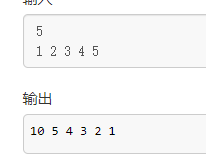链表的尾插法和头插法
头插法
链表其实和数组是差不多的(自己理解),数组是提前申请好内存而链表是边输入边加内存,所以链表能够更好的利用内存空间。
指针包括数据域和指针域 数据域用来存储数据 指针域用来存储下一个指针的位置
1.首先我们先申请一个头结点head 然后申请一个p节点来代替head的使用
2.确定好输入n
3.在申请一个中间节点s 输入s->data 并让s->next=NULL
4.(重点) 这意思是将p节点和s节点连接起来

p->next相当于在链表中申请一个空间
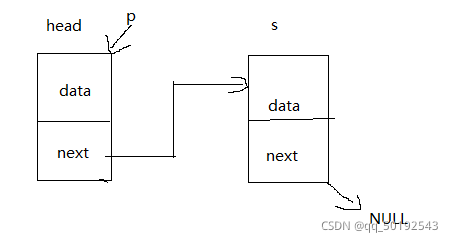
然后p=s将p移动到s位置 而此时 head中的data依然是0(这边已经给附初始值为10)
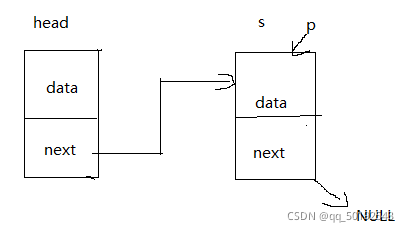
循环之后又申请一个新的节点在赋值给p然后一直移动

简单的说就是申请一个新的节点插在head后边而head不发生改变
#include<stdio.h>
#include<stdlib.h>
struct node{
int data;
struct node *next;
};
int main()
{
int n;
scanf("%d",&n);
struct node* head = (struct node*)malloc(sizeof(struct node));
head->next = NULL;
struct node* p;
head->data=10;
p=head;
for(int i=0;i<n;i++)
{
struct node* s = (struct node*)malloc(sizeof(struct node));
scanf("%d",&s->data);
s->next=NULL;
p->next=s;
p=s;
}
p=head;
printf("%d ",p->data);
while(p->next!=NULL)
{
printf("%d ",p->next->data);//跳过heada的data也就是10
p=p->next;
}
return 0;
}
输出
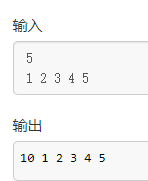
头插法
头插法和尾插法是一样的
1.首先我们先申请一个头结点head 这边不用申请p节点来代替head了
2.确定好输入n
3.在申请一个中间节点s 输入s->data 并让s->next=NULL
4.(重点) 这意思是将head节点和s节点的next都指向NULL

像这样
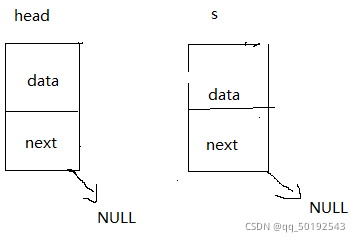
然后head在指向s head->next=s;
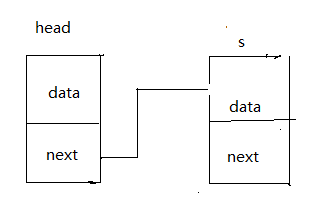
然后就重复操作就好
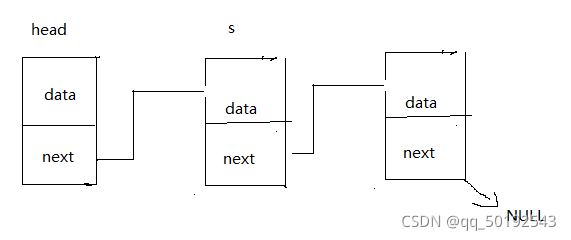
#include<stdio.h> #include<stdlib.h> struct node{ int data; struct node *next; }; int main() { int n; scanf("%d",&n); struct node* head = (struct node*)malloc(sizeof(struct node)); head->next = NULL; struct node* p; head->data=10; p=head; for(int i=0;i<n;i++) { struct node* s = (struct node*)malloc(sizeof(struct node)); scanf("%d",&s->data); s->next=NULL; s->next = head->next; head->next = s; } p=head; printf("%d ",p->data); while(p->next!=NULL) { printf("%d ",p->next->data); p=p->next; } return 0; }
输出
